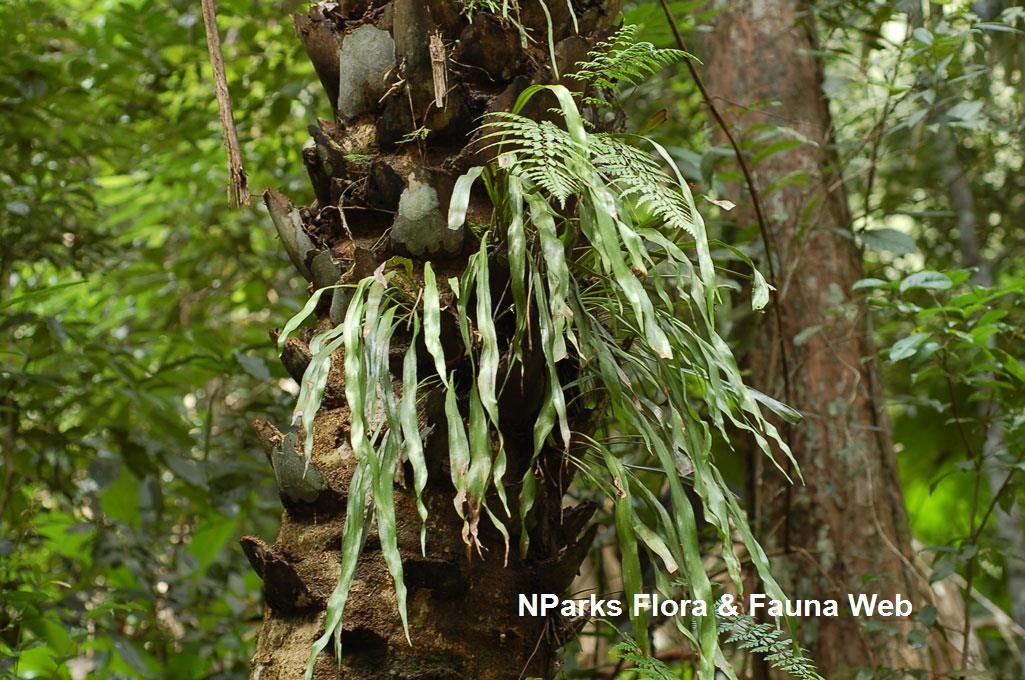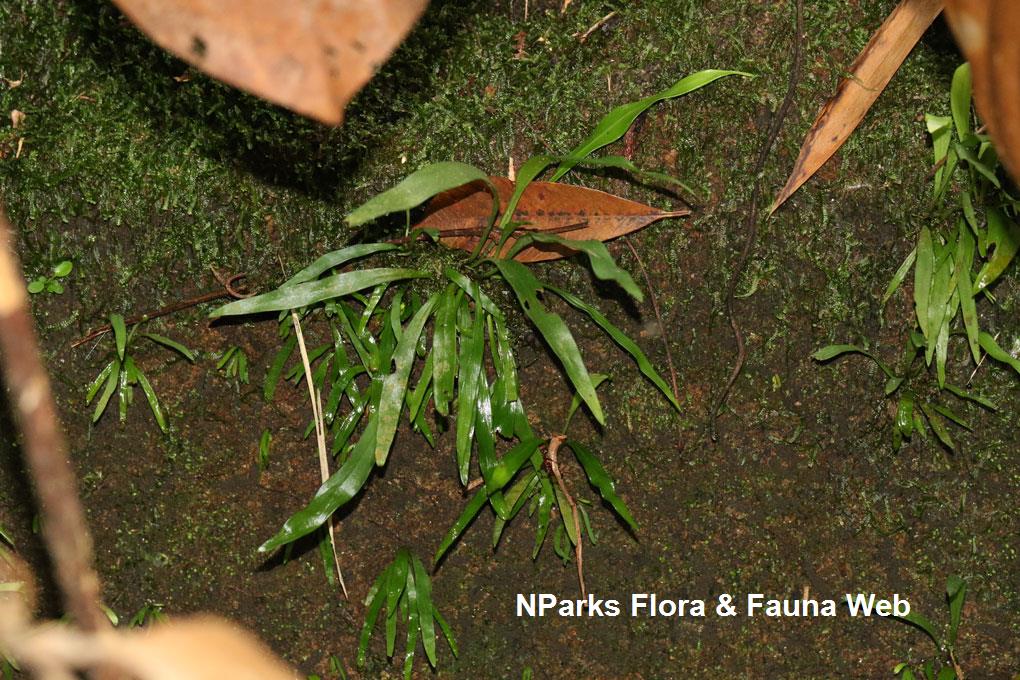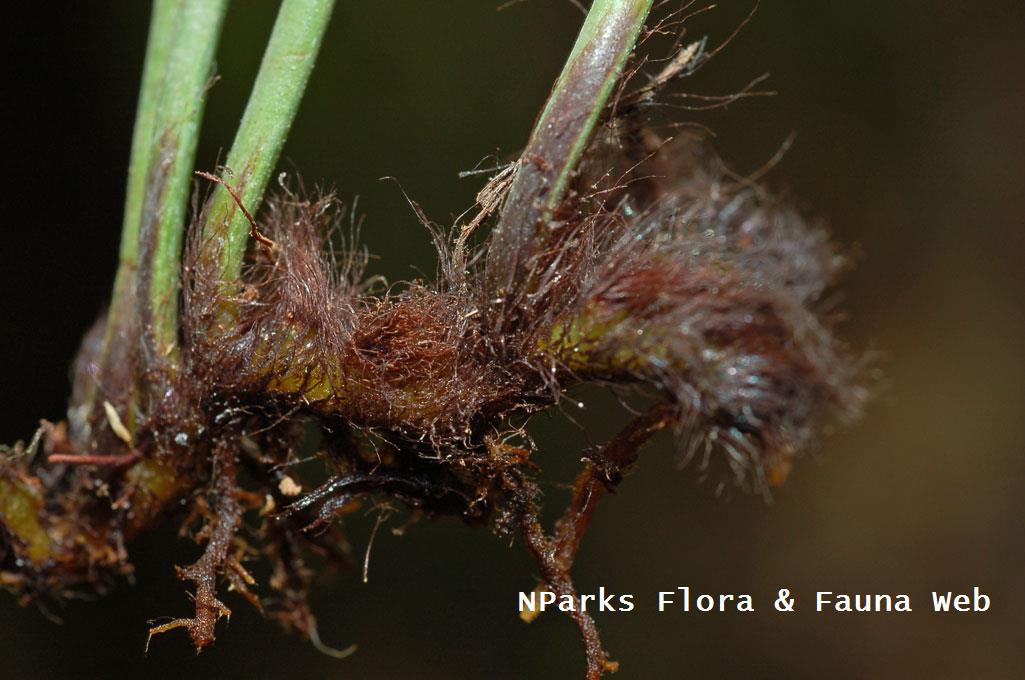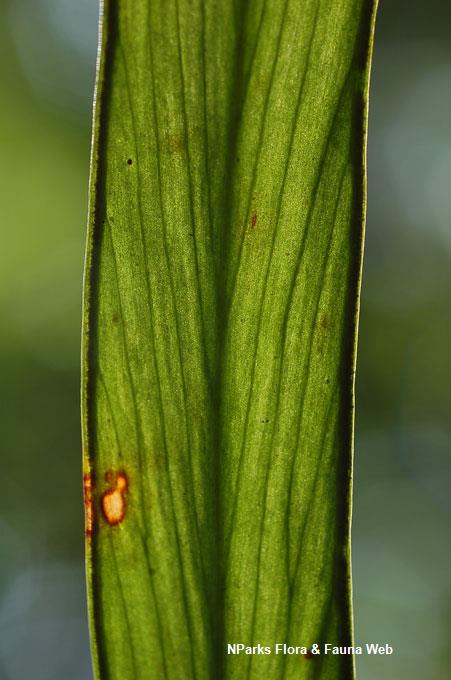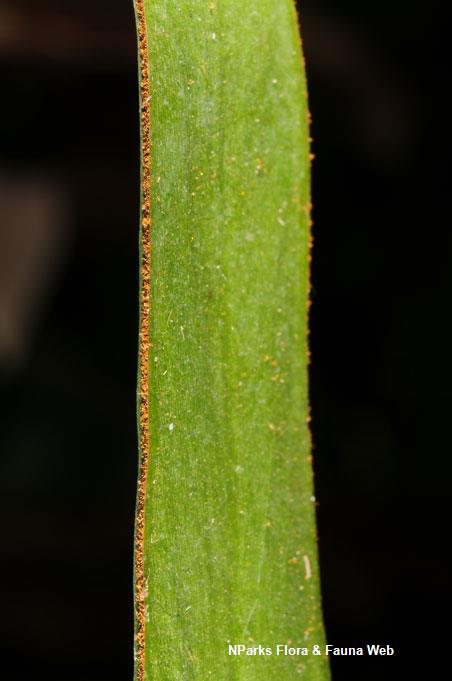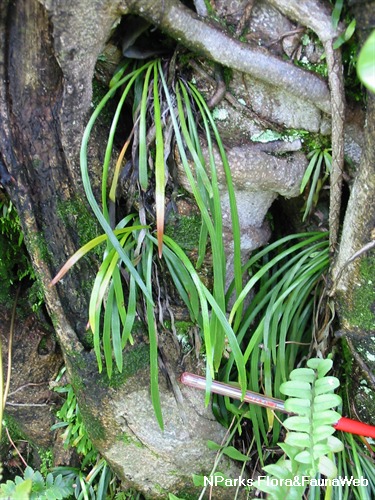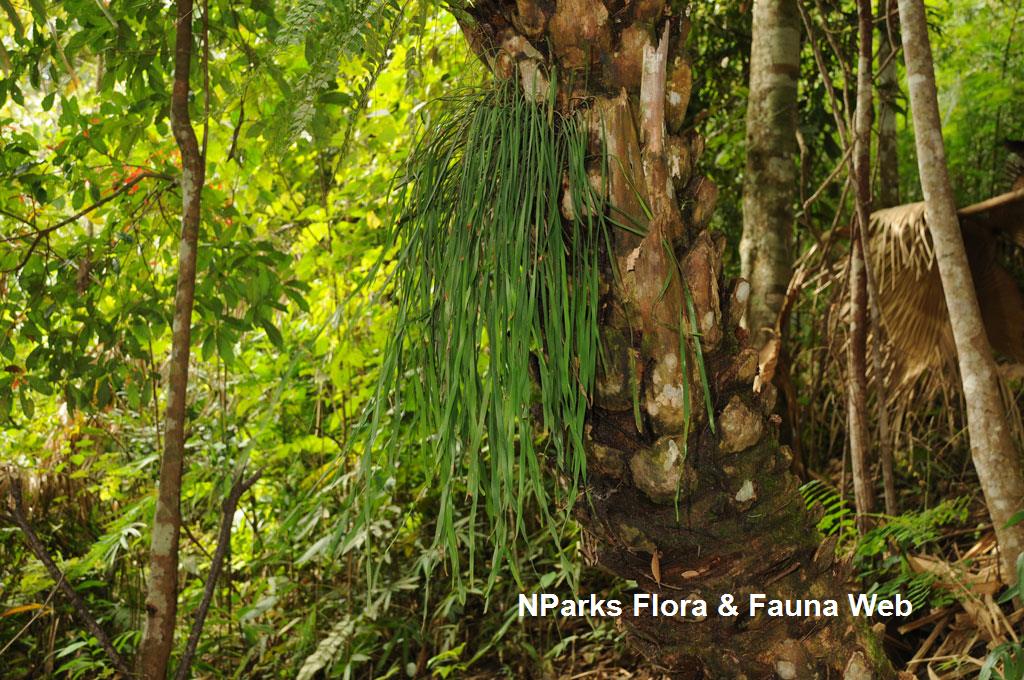
Back
Haplopteris elongata (Sw.) E.H.Crane
| Family Name: | Pteridaceae |
| Synonyms: | Vittaria elongata Sw., Vittaria scolopendrina auct. non (Bory) Mett. <1> |
Haplopteris elongata is an epiphytic fern native to Singapore. It has strap-like, pendulous fronds and short-creeping rhizomes densely covered in greyish brown to dark, linear scales. The sori are produced along the margins in between two grooves, extending through the entire margin of the frond. The newly emerged fronds and croziers remains green is a key character used to tell the Haplopteris species apart.
Name
Classifications and Characteristics
| Plant Division | Ferns & Lycophytes (Non-Seed Vascular Plants) (Fern) |
|---|---|
| Plant Growth Form | Herbaceous Plant, Lithophyte, Epiphyte |
Biogeography
| Native Distribution | Tropical East Africa, Mascarene Islands, India, South China, Continental Southeast Asia, Malesia to Australia and the Pacific Islands |
|---|---|
| Native Habitat | Terrestrial (Primary Rainforest, Secondary Rainforest) |
| Preferred Climate Zone | Tropical |
| Local Conservation Status | Native to Singapore (Least Concern (LC)) |
Description and Ethnobotany
| Growth Form | It is an epiphytic and pendulous fern that can be found growing on surfaces of rocks. |
|---|---|
| Foliage | Fronds are produced close together, up to 1 cm apart. They are strap-like, leathery, variable in length, measuring about 0.5 - 2.3 cm wide and up to 60 cm long or more. The midrib is distinct near the base of the foliage on the top surface. Veins are parallel, well-spaced apart, visible when held against the light. Newly emerged fronds and croziers remain green. |
| Reproductive Parts - non-flowering plant | Sori is positioned along the margins in between two grooves, extending throughout the entire margin of the frond. |
| Others - Plant Morphology | Rhizomes are slender, short-creeping, densely covered in scales. The scales are greyish-brown to dark, linear, lattice-like, minutely toothed with a heart-shaped base and tail-like tip. They measure to 1.2 cm or more in length and 0.1 cm wide. |
| Habitat | Occurs on trees and palms, in light shade to dense forests at low to medium altitudes, less often on street trees. <2> |
| Similar | Haplopteris elongata and Haplopteris ensiformis are similar in apperance. The key differences are found in the fronds; Haplopteris ensiformis have very narrow, linear and thick fronds that are reddish to pink when newly emerged. Unlike Haplopteris elongata which have strap-shaped, elliptic to linear fronds that are not as fleshy and remains green throughout. Only the veins and midrib of Haplopteris elongata are visible when held against a light source. |
| Cultivation | It can be propagated by spores or division. |
Plant Care and Propagation
| Light Preference | Semi-Shade |
|---|---|
| Water Preference | Moderate Water |
| Plant Growth Rate | Moderate |
| Rootzone Tolerance | Moist Soils, Shallow Media |
| Propagation Method | Division, Spore |
Foliar
| Mature Foliage Colour(s) | Green |
|---|---|
| Mature Foliage Texture(s) | Leathery |
| Prominent Young Flush Colour(s) | Green |
| Foliar Type | Simple / Unifoliate |
| Foliar Shape(s) | Non-Palm Foliage (Elliptical, Linear) |
| Foliar Venation | Pinnate / Net |
| Foliar Margin | Entire |
Non - Foliar and Storage
| Root Type | Underground (Fibrous Root) |
|---|---|
| Specialised Storage Organ(s) | Underground (Rhizome) |
References
| References | <1> Ridley, H.N. (1900). The Flora of Singapore. Journal of the Straits Branch of the Royal Asiatic Society 33:194. |
|---|
Image Repository
Others
| Master ID | 34312 |
|---|---|
| Species ID | 8725 |
| Flora Disclaimer | The information in this website has been compiled from reliable sources, such as reference works on medicinal plants. It is not a substitute for medical advice or treatment and NParks does not purport to provide any medical advice. Readers should always consult his/her physician before using or consuming a plant for medicinal purposes. |

